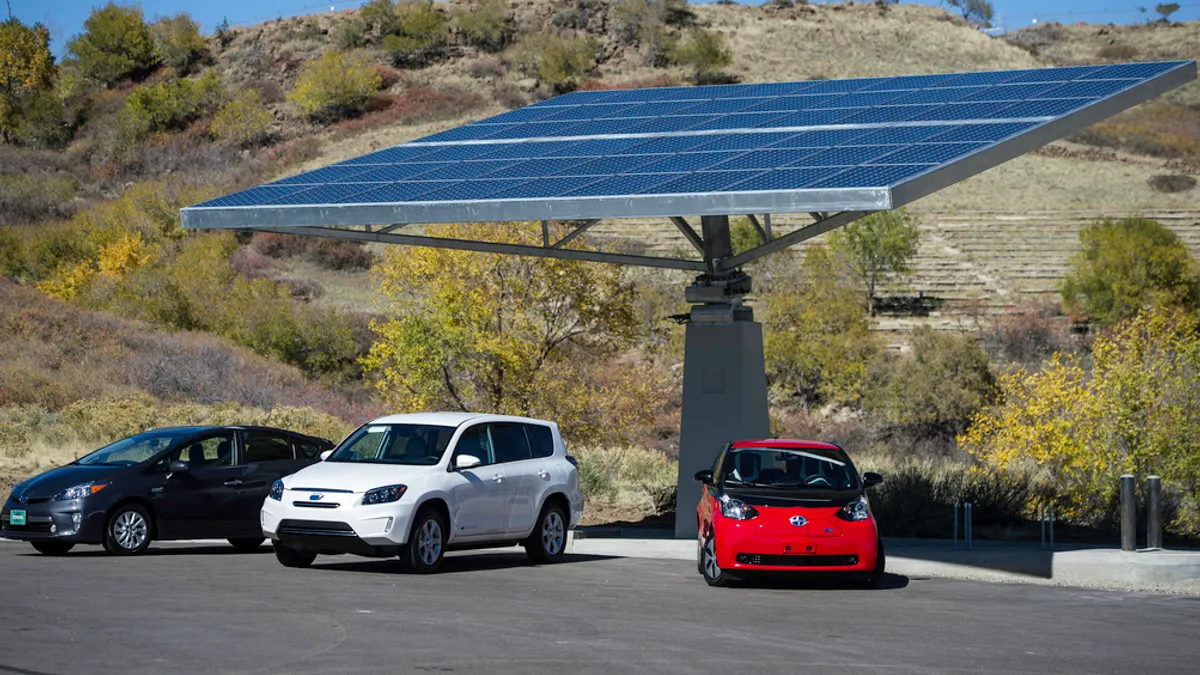Dive Brief:
- Electric vehicles have the potential to act as virtual power plants that can help utilities soak up midday renewable energy and discharge in the evenings to reduce peak load, according to a study from Jackson Associates released Wednesday.
- The analysis, based on 5,000 Southern California Edison (SCE) customers' hourly loads, commuting behavior and "potential electric vehicle (EV) ownership," concluded that at a 10% EV penetration, the batteries could shift the utility's entire residential peak load to nighttime hours.
- Over 20 million EVs are expected on U.S. roads by 2030 — a rapid increase from the 1.26 million on the road as of June, according to a Smart Electric Power Alliance (SEPA) report released this month. "[U]tilities need to plan ahead to minimize grid impacts" of growing EV adoption, the group concludes.
Dive Insight:
Utilities see potential in using EVs as grid assets, but also must consider technical concerns, manufacturer warranties and range complexities.
Vehicle-to-grid integration "has gotten a lot of hype over the last few years, but in terms of providing value to the grid we still have some work to do to prove that out," Lang Reynolds, Duke Energy's director of electrification strategy, told Utility Dive.
The Jackson Associates study finds the financial implications of that integration could be large, with a potential annual savings of $560/EV customer if SCE reduced peak residential load through vehicle batteries.
"We were surprised both at the relatively small 10 percent EV market saturation required to completely clip the SCE residential peak and the large annual savings ... even after paying for nighttime recharging," Jackson Associates President Jerry Jackson said in a statement.
Utilities should shift from defensive "managed charging" strategies to "an offense strategy that draws on EV battery storage during peak hours with overnight recharging," according to Jackson.
"Expected rapid growth of the EV market along with the significant benefits shown here of even limited EV market saturation highlight the urgency of developing appropriate utility programs, EV technologies and a supportive regulatory framework," Jackson said.
SEPA also concluded increased EV deployment could result in a "trillion dollar EV opportunity for prepared and proactive utilities."
SEPA's report recommends utilities identify opportunities to incorporate load management, including managed charging and rate design, and adopt open charging protocols to "help provide alignment around charging industry standards and load management to leverage EVs as a grid asset."














